This post may contain affiliate links. For more information, please see our affiliate policy.
Oven Roasted Butternut Squash makes a delicious side dish any night of the week or on your holiday table. Or, meal prep a batch to toss into salads and grain bowls all week long.
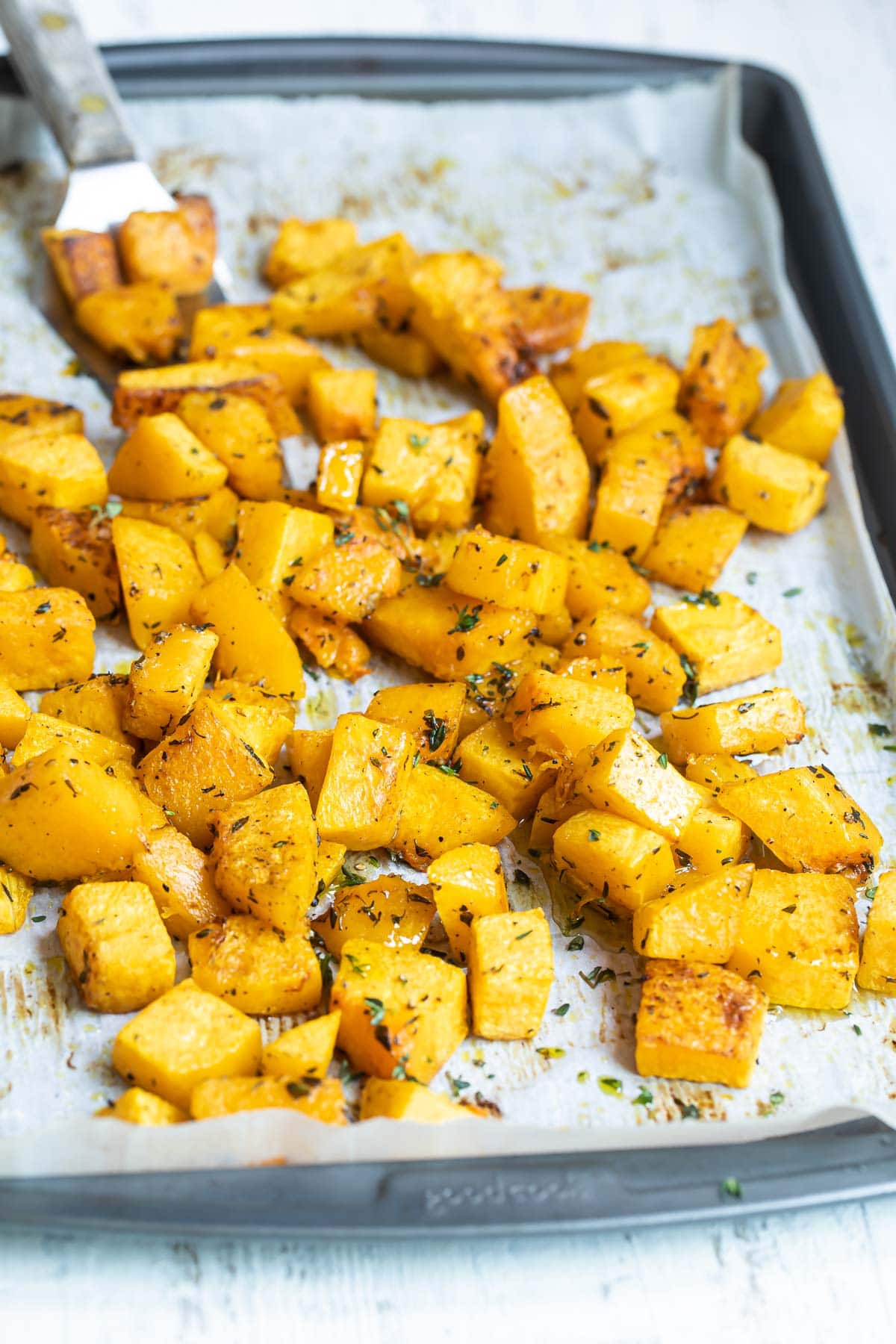
Roasted butternut squash is a versatile, delicious vegetable. It works great as a simple side dish, tossed in olive oil, sprinkled with fresh herbs and salt, and roasted to golden brown perfection. It’s naturally vegan, too. It reminds me of sweet potatoes but with a softer flavor and more tender texture.
But I think roasted squash’s greatest power lies in it’s ability to pair with other ingredients. I’m obsessed with putting squash in soups, salads, and grain bowls. It adds heft, structure, and texture among leafy greens, dried fruit, and crunchy nuts in a salad or diced veggies and beans in a soup. When you really need to sink your teeth into something, roasted butternut squash is there for you.
Table of Contents
Recipe ingredients
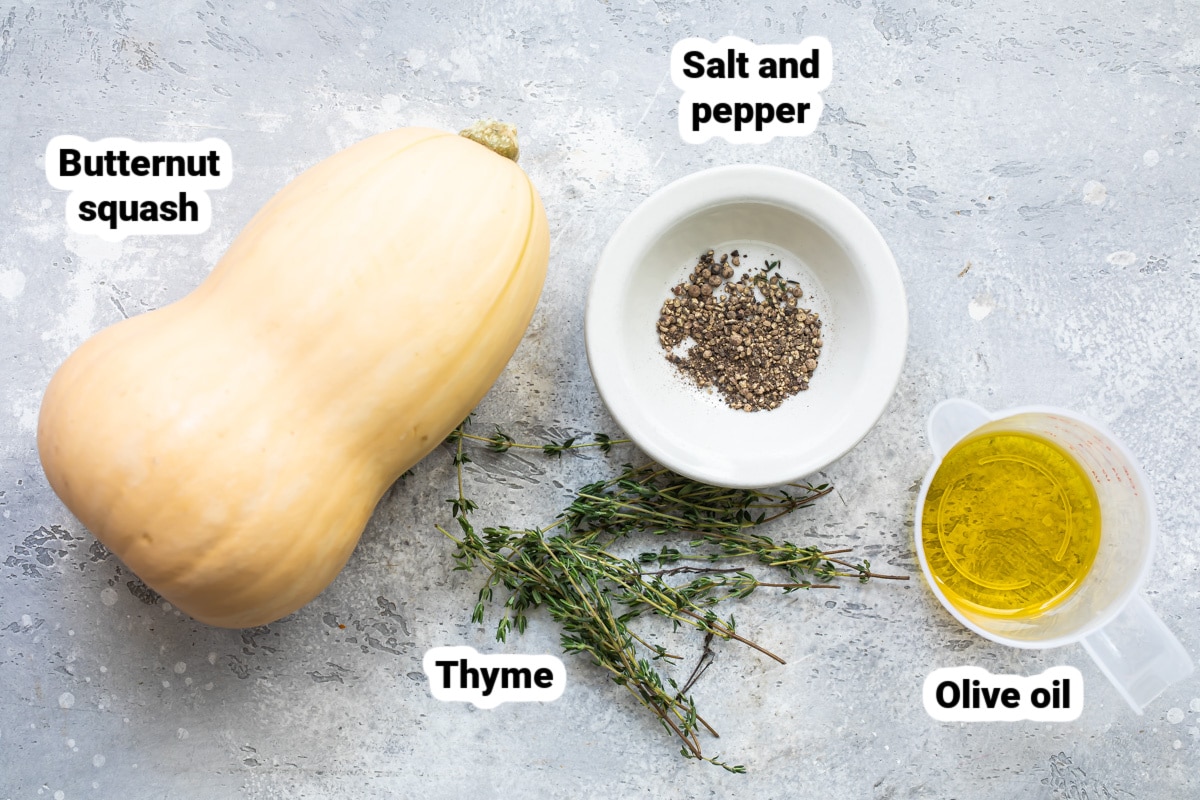
At a Glance: Here is a quick snapshot of what ingredients are in this recipe.
Please see the recipe card below for specific quantities.
Ingredient notes
- Squash: Choose a medium butternut squash that is firm to the touch and doesn’t have any soft spots. For more information on prep, see my full tutorial on how to cut butternut squash.
- Thyme: Fresh rosemary and sage are also delicious on squash, or try any of your other favorite spices.
Step-by-step instructions
- Preheat oven to 425 degrees. Line a rimmed baking sheet with parchment paper or aluminum foil for easy cleanup. Peel butternut squash with a sharp vegetable peeler and cut in half lengthwise with a sharp knife. Scoop out the seeds with a large spoon and discard. Cut into 1 1/2-inch cubes.
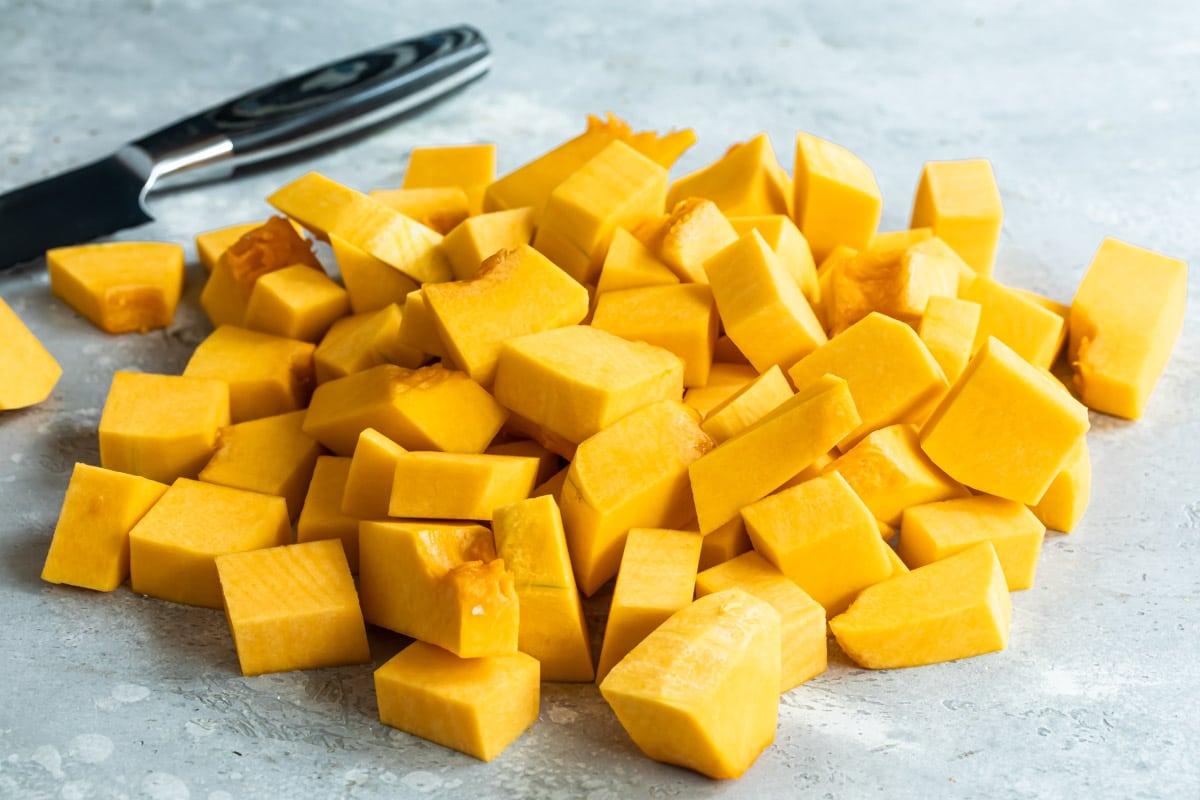
- In a large bowl, add butternut squash. Drizzle with extra-virgin olive oil and sprinkle with thyme, salt, and pepper (I like ½ teaspoon salt and ¼ teaspoon pepper). Toss until evenly coated. Spread in a single layer on the prepared sheet pan.
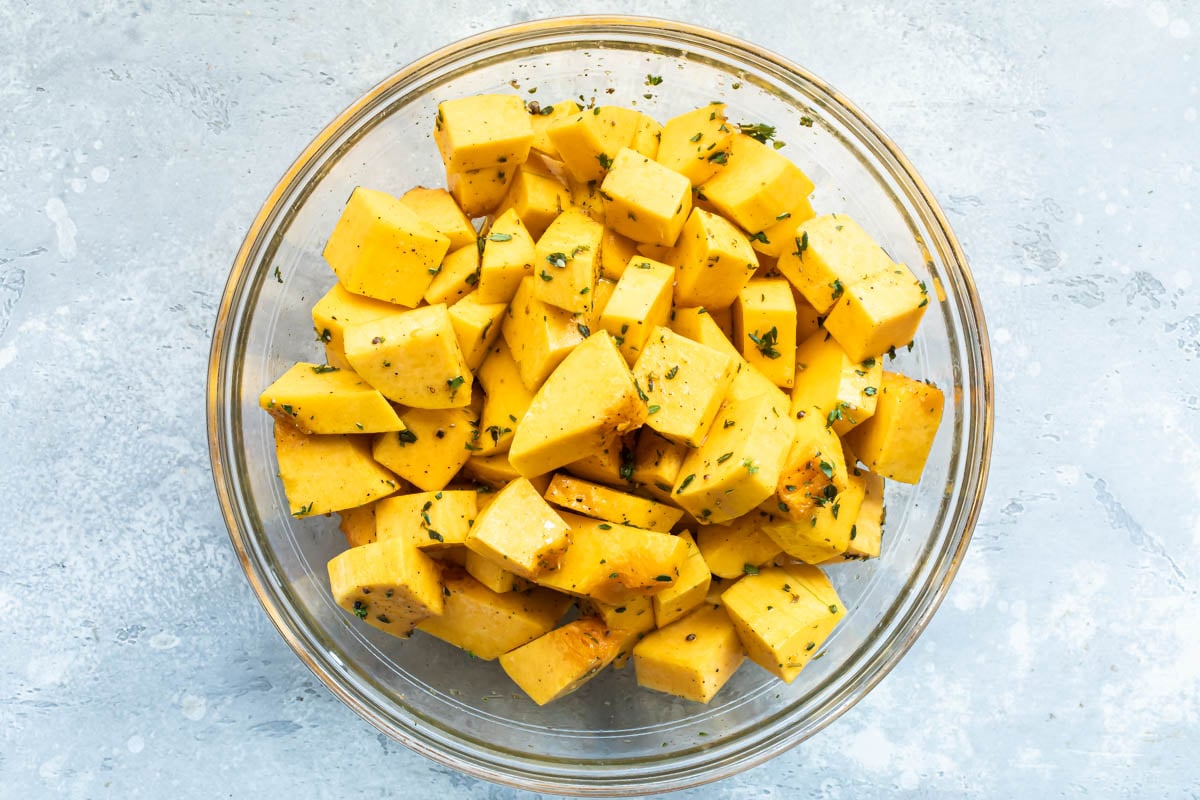
- Roast until the squash is fork tender and starting to caramelize, about 20 to 25 minutes, stirring after 15 minutes.
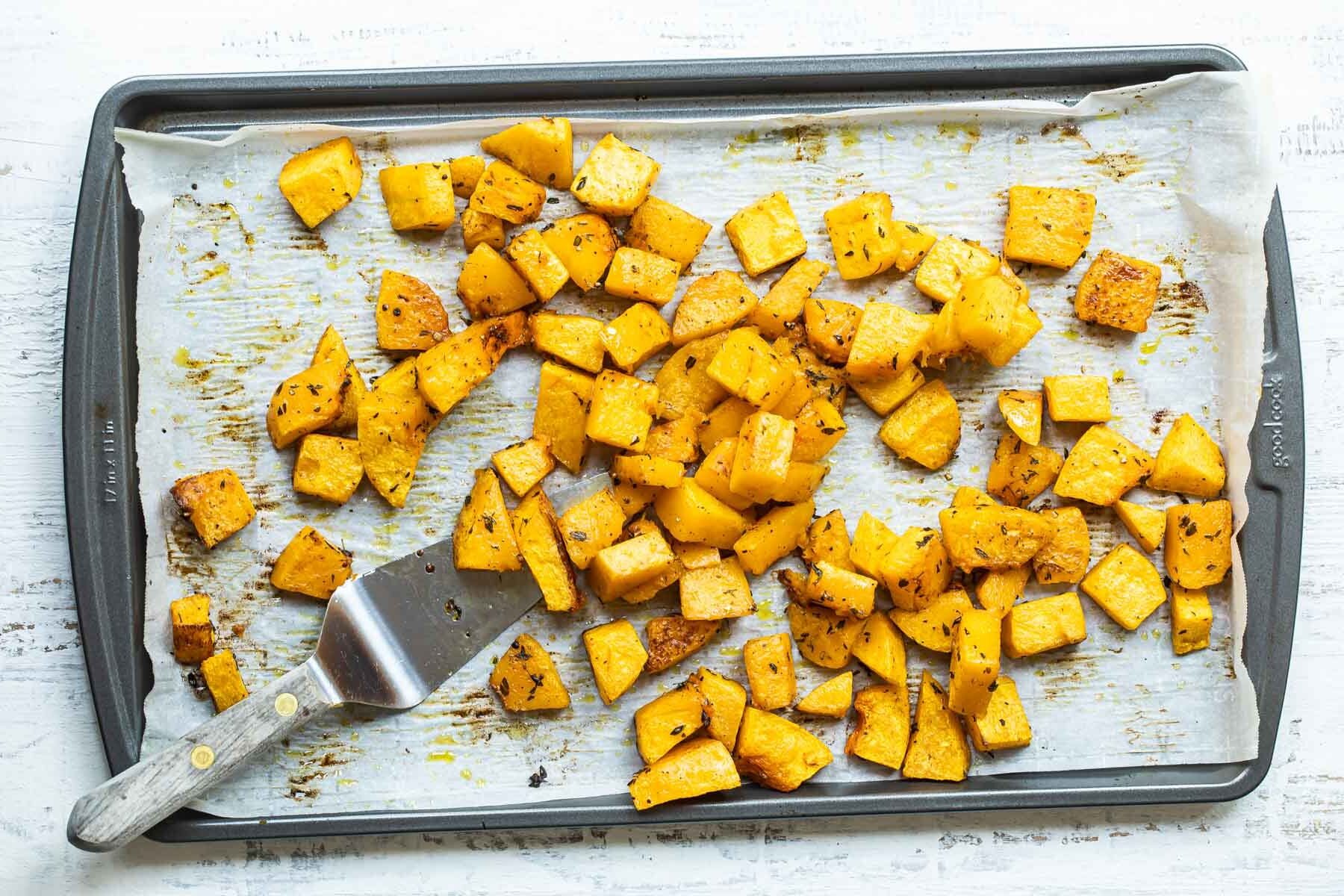
Recipe tips and variations
- Yield: 2 pounds butternut squash yields about 4 cups, peeled and cubed, enough for four 1-cup servings.
- Storage: Store leftovers in an airtight container in the refrigerator for up to 4 days. Leftover roasted butternut squash is great tossed into salads, meal prep containers, or reheated as a side dish the next day.
- Make ahead: The butternut squash can be peeled, seeded, and cubed up to 2 days in advance. Store covered in the refrigerator.
- Uniform size: Make sure that the pieces are all about the same size, so they cook evenly. For squash, aim for bite-sized 1 1/2-inch pieces.
- Sweet: For a sweeter interpretation of butternut squash, use ground cinnamon instead of herbs and drizzle the roasted butternut squash with pure maple syrup.
- Roast the halves: If you’re making mashed or puréed squash, cut the squash in half, rub the sides with olive oil, season with salt and pepper, and roast cut-side down for 45 minutes to 1 hour. For more information, see my tutorial on How to Cook Spaghetti Squash (it works the same way for butternut and acorn squash).
- Keep things dry: Water-logged veggies = more steam which prevents things from browning.
- Crowd control: Vegetables need room to touch the baking sheet surface in order to brown, so don’t let them get too crowded. Use two sheet trays if you’re cooking a lot.
- Yogurt sauce: A high-quality plain yogurt mixed with fresh garlic, olive oil, and fresh herbs makes a tasty sauce for roasted vegetables of all kinds, especially high-starch vegetables such as squash, carrots, beets, and sweet potatoes.
- Butternut squash soup: Puree roasted squash in a blender and thin with chicken broth or vegetable broth until smooth. Season to taste with salt and pepper.

Frequently Asked Questions
If you’re making mashed or puréed squash, cut the squash in half, rub the sides with olive oil, season with salt and pepper, and roast cut-side down for 45 minutes to 1 hour. For more information, see my tutorial on How to Cook Spaghetti Squash (it works the same way).
More delicious roasted vegetables
Vegetable Recipes
Roasted Broccoli
Vegetable Recipes
Roasted Cauliflower
Vegetable Recipes
Roasted Asparagus Recipe
Vegetable Recipes
Roasted Green Beans
Join Us
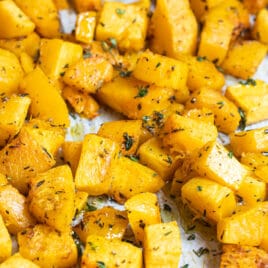
Roasted Butternut Squash
Ingredients
- 2 pounds butternut squash (1 large squash, see note 1)
- 2 tablespoons olive oil
- 1 tablespoon minced fresh thyme or 1 teaspoon dried thyme (see note 2)
- Salt and freshly ground black pepper
Instructions
- Preheat oven to 425 degrees. Line a rimmed baking sheet with parchment paper or aluminum foil for easy cleanup.
- Peel butternut squash and cut in half lengthwise. Scoop out the seeds and discard. Cut into 1 1/2-inch cubes. You will have about 7 cups of butternut squash cubes, more or less depending on your exact squash size.
- In a large bowl, add butternut squash. Drizzle with olive oil and sprinkle with thyme, salt, and pepper (I like ½ teaspoon salt and ¼ teaspoon pepper). Toss until evenly coated. Spread in an even layer on prepared baking sheet.
- Roast until the squash is tender and starting to caramelize, about 20 to 25 minutes, stirring after 15 minutes.
Notes
- Squash: Choose a butternut squash that is firm to the touch and doesn’t have any soft spots. For more information on prep, see my full tutorial on how to cut butternut squash.
- Thyme: Fresh rosemary and sage are also delicious on squash.
- Yield: 2 pounds butternut squash yields about 4 cups, peeled and cubed, enough for four 1-cup servings.
- Storage: Store leftovers covered in the refrigerator for up to 4 days. Leftover roasted butternut squash is great tossed into salads, meal prep containers, or reheated as a side dish the next day.
Nutrition
Meggan Hill is a classically-trained chef and professional writer. Her meticulously-tested recipes and detailed tutorials bring confidence and success to home cooks everywhere. Meggan has been featured on NPR, HuffPost, FoxNews, LA Times, and more.
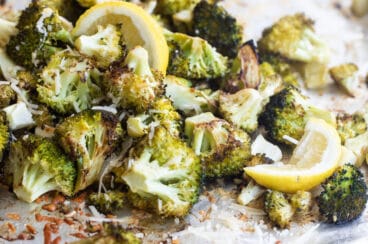
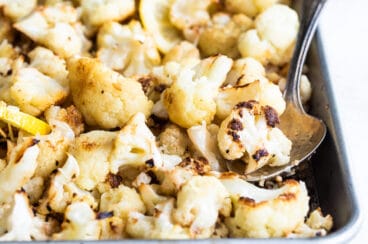
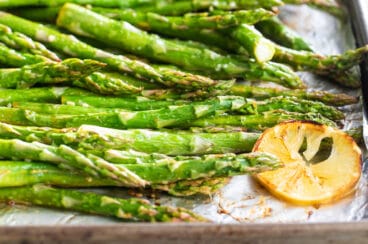
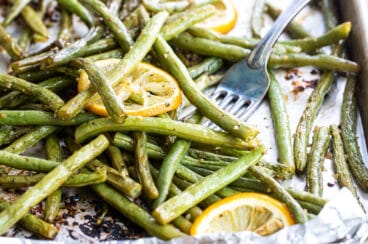
This exceeded expectations. Thanks for another great recipe!
This looks AMAZING !!! That is a beautiful and a fantastic sounding recipe. Your posts are always easy to understand and Helpful. Thank You,